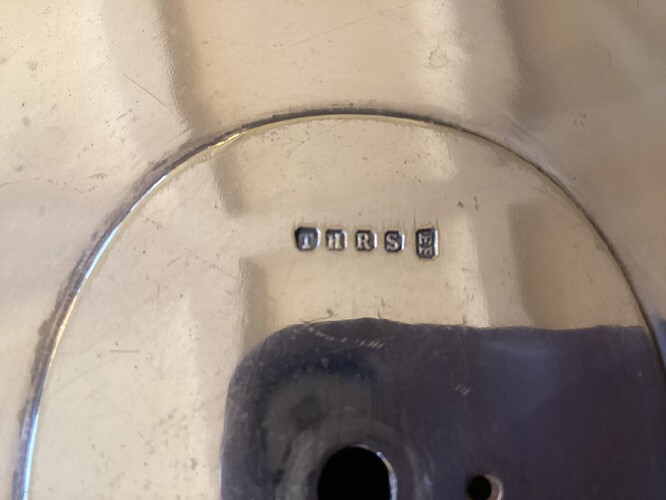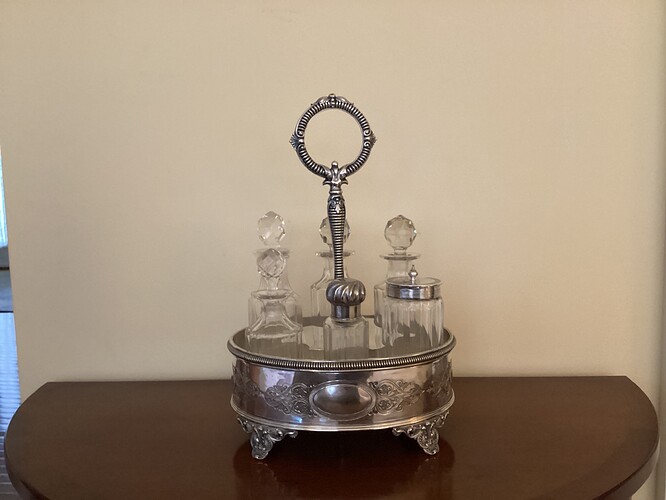I have a lovely cruet set with a hallmark or makers mark I cannot identify. Any help would be greatly appreciated. Thank you.
Not a hallmark - it’s electroplated (note the EP part of the mark). I cannot identify the manufacturer but it may be a Sheffield company.
Phil
Thank you for such a timely response and help. I’m sorry for the casual interchanging of terms, I should have clarified that I knew it was plated, but was hoping to figure out the name of the silversmith or manufacturer. I’m glad you said Sheffield, I have been trying to find just the THR because I thought the S might be Sheffield, but worried I might be sending myself down the wrong trail with that assumption. Any ideas out there who T H R might be?
Was it not an R but a B then the former footman Thomas Henry Blake of Sheffield would be exactly correct.
Thomas Henry Blake (1850-1940) was born at Spalding, Lincolnshire, the son of Richard, a tailor) and his wife, Mary. By 1871, he was a footman at Wingerworth Hall, near Chesterfield. A decade later, he had founded a silver firm in Sheffield with John Bradley. In the Census (1881), Blake was enumerated at Alexandra Road, Heeley, as a manufacturer employing 12 men, 14 women, nine boys, and a girl.
Bradley & Blake had failed by 1885, when Blake launched his own business in Holly Lane as an electro-plate spoon and fork manufacturer. In 1895, he registered a silver mark from Crown Silver Works, Holly Lane. Blake soon relocated Crown Silver Works to Carver Lane. In 1924, the firm became ‘Ltd’, with £4,000 capital. Blake used the name and ‘BROOM’ mark.He died on 1 March 1940, leaving £9.
Here’s another T H B S mark on a tea set;
Footmen were not that well paid or tipped in the 19th century. Nor did they know much about silversmithing. Polishing the stuff perhaps. So where did Blake get the cash to start up his factory?

